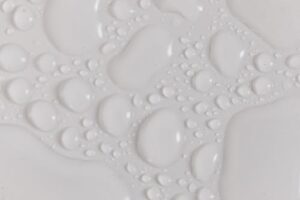Key Takeaways
- Efficient water damage handling necessitates prompt response and a solid grasp of the challenges.
- Outdoor preventive measures can minimize potential damage.
- Understanding different types of water damage is crucial for effective treatment.
- Hiring professional water damage specialists ensures thorough cleanup and restoration.
Understanding Water Damage
Water damage is a pervasive issue that can affect any home or business, leading to significant disruption and costly repairs. It can stem from many sources, including severe weather events like hurricanes and heavy rainfalls, plumbing mishaps such as burst pipes, and sometimes even simple human errors like leaving a tap running. The impact of water damage varies drastically based on factors such as the initial water source and duration of exposure.

Knowledge about potential sources and scenarios of water damage helps you mitigate risks more effectively. For example, knowing which surfaces or structures within a building are more susceptible to water damage allows you to prioritize inspections and protective measures for those areas.
Types of Water Damage
Not all water damage is the same; knowing the various types of water damage is crucial for identifying the proper restoration techniques. Timely understanding and responsive action to water damage mitigation are essential steps in protecting your property from further harm. Water damage is typically classified into three primary types according to the origin and level of water contamination.:
Clean Water Damage
This derives from non-hazardous water sources such as rainwater, malfunctioning appliances like a leaking dishwasher, or a broken water supply line. While the least harmful, clean water damage can deteriorate if left unattended, cultivating bacteria growth or transforming into gray or black water damage over time.
Gray Water Damage
Gray water might contain contaminants and is unsuitable for human consumption. It often comes from household appliances that could contain detergents or mild pollution, such as dishwashers or washing machines. The presence of chemicals or microorganisms typically means that gray water damage demands more rigorous cleanup procedures to prevent health risks.
Black Water Damage
This is the most dangerous form, originating from highly contaminated water sources like sewage backups or floodwater. Because black water harbors harmful pathogens and possibly toxic substances, handling it requires immediate and professional intervention.
Addressing each type of water damage with unique precautions and solutions is essential for adequately restoring the affected area without endangering health or compromising home integrity.
Immediate Steps to Take
When dealing with water damage, time is of the essence. Prompt action can significantly reduce the extent of the damage and associated repair costs. Here are the crucial steps to take immediately after water damage is discovered:
- Prioritize Safety: Ensure the safety of all individuals in the vicinity. To prevent electrical hazards, turn off the electricity if water has reached electrical appliances or outlets. Evacuate the premises if necessary.
- Stop the Water Source: If possible and safe, locate and halt the source of the water intrusion. This might mean shutting off the main water valve or addressing appliance-related issues.
- Document the Damage: Before starting the cleanup process, document the damage extensively with photos and videos for insurance purposes. This step is crucial for supporting claims and ensuring that you receive adequate compensation for the damage.
- Initiate Water Removal: If available, start removing standing water using mops, towels, or a wet/dry vacuum. Removing water quickly helps prevent further damage and mitigates the risk of mold growth.
- Call in the Experts: Engage licensed water restoration specialists to handle extensive damage and complete the drying process. Professionals have the equipment and experience to deal effectively with visible and hidden damages.
Each step is critical in successfully managing and mitigating the impacts of water damage.
Preventive Measures
The best strategy against water damage is prevention. Regular maintenance and proactive measures can significantly minimize water intrusion risks. To ensure they are in good working condition, routinely inspect plumbing systems, roofs, and gutter systems. During severe weather alerts, take extra precautions by securing potential weak spots like windows and basement entrances.
Understanding the regional climate and expected weather patterns can help you prepare your home. Researching climate data from reputable sources, such as government or academic institutions, can help you anticipate climate shifts and rainfall patterns, enabling you to make informed decisions about safeguarding your property.
The Importance of Professional Help
After any significant water damage event, seeking professional restoration services is vital. Professionals not only have access to advanced equipment that effectively dries out all moisture, including hidden damp areas, but they can also assess the damage comprehensively, identifying issues that might not be visible to the untrained eye. Mold growth is a frequent long-term effect of water damage, and it can present significant health hazards if not dealt with promptly. By engaging expert services, you can ensure thorough remediation and a safer environment for your home or business.
The cost of professional intervention often outweighs the potential losses associated with unchecked water damage, making it a wise investment for property owners aiming for long-term peace of mind.
Long-term Effects
Disregarding or mishandling water damage may result in serious and expensive long-term effects. Due to prolonged water exposure, structural elements like floors, walls, and ceilings can gradually weaken. Mold development, which impacts air quality and can jeopardize residents’ health, flourishes in moist conditions, turning water-damaged regions into breeding sites if not adequately dried and addressed.




